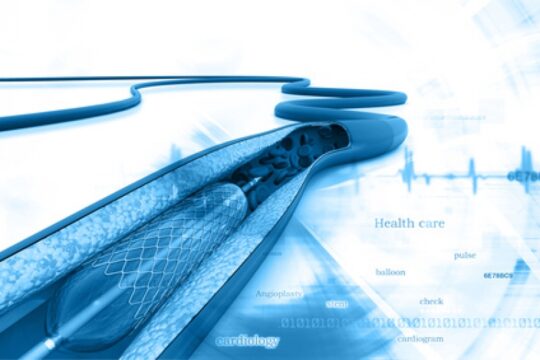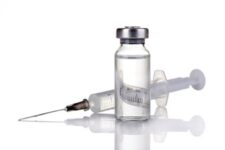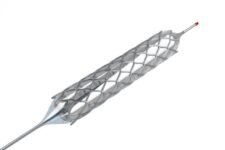Original title: Randomized Trial of Complete Versus Lesion-Only Revascularization in Patients Undergoing Primary Percutaneous Coronary Intervention for STEMI and Multivessel Disease: The CvLPRIT Trial. Reference: Gershlick AH et al. J Am Coll Cardiol. 2015 Mar 17;65(10):963-72. Recent studies such as the PRAMI and the one we summarize here show complete revascularization of AMI patients before discharge…
The MGuard stent shows a trend toward reduced mortality in PCI
Original title: Mesh-Covered Embolic Protection Stent Implantation in ST-Segment–Elevation Myocardial Infarction. Final 1-Year Clinical and Angiographic Results From the MGUARD for Acute ST Elevation Reperfusion Trial. Reference: DariuszDudek et al. CircCardiovascInterv. 2015 Feb;8(2). The MGuard is a micronet mesh-covered stent designed to reduce distal embolization in the context of ST elevation myocardial infarction. In the MASTER study…
Different characteristics of non culprit plaque by OCT
Original title: Pancoronary plaque vulnerability in patients with acute coronary syndrome and ruptured culprit plaque: A 3-vessel optical coherence tomography study. Reference: Rocco Vergallo et al. Am Heart J 2014;167:59-67. Recent studies have described different clinical characteristics between ACS patients with and without ruptured culprit plaque. Given the systemic nature of atherosclerosis, the hypothesis of this study is…
Pretreatment with clopidogrel only for ST elevation AMI patients
Original title: Prognostic impact of clopidogrel pretreatment in patients with acute coronary syndrome managed invasively. Reference: Almendro-Delia M et al. Am J Cardiol. 2015; Epub ahead of print. This study analyzed the ARIAM data including 9621 AMI patients diagnosed with coronary angiography receiving clopidogrel in 49 center between 2002 and 2012. Most patients had STEMI (63%), and most…
Net clinical benefit of bivalirudin in STEMI patients
Original title: Bivalirudin Versus Heparin With or Without Glycoprotein IIb/IIIa Inhibitors in Patients With STEMI Undergoing Primary Percutaneous Coronary Intervention: Pooled Patient-Level Analysis From the HORIZONS-AMI and EUROMAX Trials. Reference: Stone GW et al. J Am CollCardiol. 2015 Jan 6;65(1):27-38. The HORIZONS-AMI (Harmonizing Outcomes with RevasculariZatiON and Stents in Acute Myocardial Infarction) that included 3602 STEMI patients undergoing…
Thienopyridine Pretreatment in Non ST Elevation ACS syndrome
Original title: Reappraisal of thienopyridine pretreatment in patients with non-ST elevation acute coronary syndrome: a systematic review and meta-analysis. Reference: Bellemain-Appaix A. et al. BMJ. 2014;Epub ahead of print. This meta-analysis included 7 studies that included a total 32383 patients admitted with non ST elevation ACS; 17545 (54.5%) underwent PCI. These studies were published between 2001 and 2013:…
More evidence for unprotected left main PCI
Original title: Outcomes After Emergency Percutaneous Coronary Intervention in Patients UIT unprotected Left Main Stem Occlusion. The BCIS National Audit of Percutaneous Coronary Intervention 6-Years Experience. Reference: Niket Patel, et al. J Am Coll Cardiol Interv 2014;7:969-80 AMI involving unprotected left main is not frequent in catheterization labs since most of these cases present in shock. There is…
Percutaneous Coronary Intervention to Unprotected Left Main Stem In Different Coronary Syndromes
Original title: Comparative Outcomes After Unprotected Left Main Stem Percutaneous Coronary Intervention: A National Linked Cohort Study of 5,065 Acute and Elective Cases From the BCIS Registry (British Cardiovascular Intervention Society). Reference: Sami S. Almudarra, et al. JACC Cardiovasc Interv 2014;7:717-30 Although myocardial revascularization surgery has long been the gold standard treatment for left main lesions, PCI has…
Benefits at 5 years of routine invasive strategy in Non-ST-Elevation Acute Coronary Syndromes
Original title: Impact of an invasive strategy on five years outcomein men and women with Non-ST-Elevation Acute Coronary Syndromes. Reference: Joakim Alfredsson et al. Am Heart J. 2014;Epub ahead of print. This meta-analysis included patients with non-ST-elevation acute coronary syndrome (NSTE ACS) from randomized studies FRISC II, ICTUS and RITA 3 and compared the routine invasive strategy…
Reduced risk of acute, late and very late thrombosis with new generations of DES versus BMS in the acute myocardial context
Original title: Stent thrombosis in new-generation drug-eluting stents in patients with STEMI undergoing primary PCI: a report from SCAAR. Reference: Sarno G et al. J Am Coll Cardiol. 2014;Epub ahead of print. This study evaluated 34147 consecutive patients suffering acute myocardial infarction with ST-segment elevation included in the SCAAR registry (Swedish Coronary Angiography and Angioplasty Registry) undergoing primary…
Percutaneous Closure of Postinfarction Ventricular Septal Defect, an early alternative to surgery.
Original title: Percutaneous Closure of Postinfarction Ventricular Septal Defect: In-Hospital Outcomes and Long-Term Follow-Up of UK Experience. Reference: Circulation. 2014 Jun 10;129(23):2395-402. As a mechanical post AMI complication, interventricular communication carries a grim prognosis. Surgery has achieved reasonable outcomes but only for those patients who survive the acute phase of healing. Percutaneous closure is a viable early alternative. …










